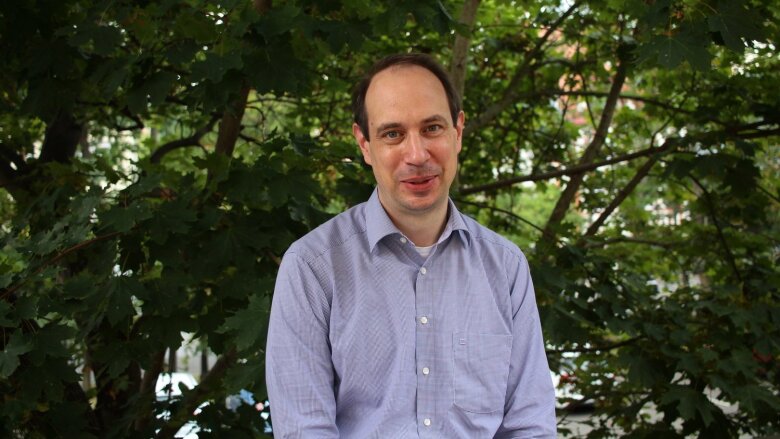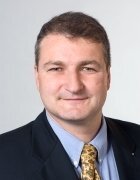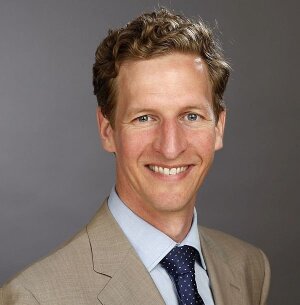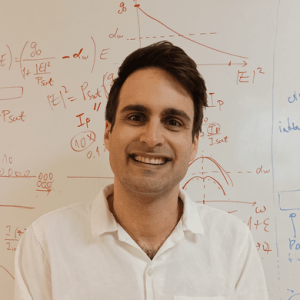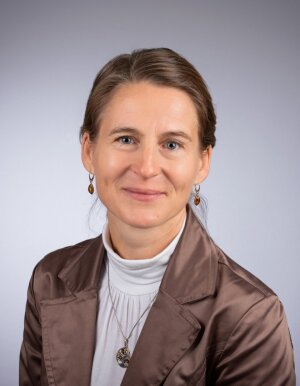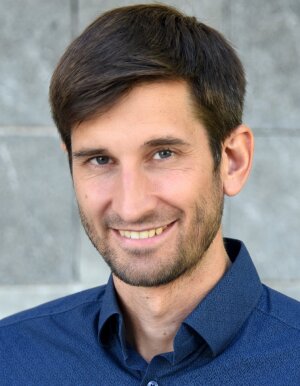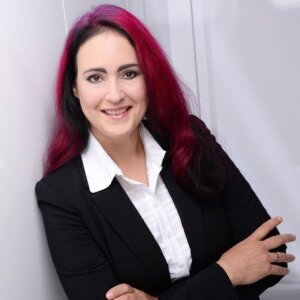- Light
Meldung vom:
Zur Original-Meldung
Das Physikalische Kolloquium findet, wenn nicht anders angegeben, jeweils um 16:15 Uhr im Hörsaal 1 Abbeanum, Fröbelstieg 1 statt.
-
13.11.2023
Prof Dr. Reinhard Kienberger, TU München
Foto: TU MünchenProf. Dr. Reinhard Kienberger
TU MünchenAttosecond science – from the beginning to measuring electron dynamics in molecules, solids and layered systems
The generation and measurement of single isolated attosecond pulses in the extreme ultraviolet (XUV) at the beginning of this century has recently been awarded with the Nobel Prize in Physics [1]. This talk will give a historic review since the beginning of attosecond science and its impact on the understanding of electronic processes on the attosecond timescale.
A pump/probe technique, “attosecond streaking” [2], was used to investigate electron dynamics on surfaces and layered systems with unprecedented resolution. Photoelectrons generated by laser based attosecond extreme ultraviolet pulses (XUV), are exposed to a dressing electric field from well synchronized few-cycle infrared (IR) laser pulses. The energy shift experienced by the photoelectrons by the dressing field is dependent on the delay between the XUV pulse and the dressing field and makes it possible to measure the respective delay in photoemission between electrons of different type (core electrons vs. conduction band electrons). The information gained in such experiments on tungsten [3] triggered many theoretical activities leading to different explanations on the physical reason of the delay. Attosecond streaking experiments have been performed on different solids [4,5], layered structures and liquids, resulting in different delays – also depending on the excitation photon energy. These measurements lead to a stepwise increase of the understanding of different physical effects contributing to the timing of photoemission. In this presentation, an overview on the different physical contributions to attosecond time delays in photoemission will be given. The “absolute” time delay, i.e. the delay between the instant of ionization and the emission of a photoelectron will be discussed and latest measurements will be presented.
[1] M. Hentschel*, R. Kienberger* et al., Nature, 414, (2001)
[1] R. Kienberger et al., Nature 427, 817 (2004)
[2] A. Cavalieri et al., Nature 449, 1029 (2009)
[3] S. Neppl et al., Nature 517, 342 (2015)
[4] M. Ossiander et al., Nature 561, pages374 (2018)Gastgeber: Prof. Gerhard Paulus
-
20.11.2023
Prof. Dr. Peter Hommelhoff, Friedrich-Alexander-Universität Erlangen
Foto: privatGastgeber: Prof. Dr. Ralf Röhlsberger
Prof. Dr. Peter Hommelhoff
Friedrich-Alxander-Universität ErlangenAttosecond physics - at nanometric solids
Just decorated with the 2023 Nobel Prize in Physics, the field of attosecond science and technology continues to blossom. In this talk, I will show many of the pivotal effects of attosecond physics, however, not at an individual quantum object such as an atom or a molecule in the gas phase, but at the surface of a room-temperature nanometric needle tip. We could observe many of the pivotal effects of attosecond physics:
the famous re-collision plateau, strong effects of the exact shape of the driving waveform, and recently also more complex two color-controlled coherent electron dynamics. Based on the insights from this experiment, I will show that we have now entered the realm of precision attosecond physics, with electrons photo-emitted from a solid.
I will show where the field stands, what insights can be gained from this new understanding of electron dynamics on attosecond time scales, and where the field might be going. Last, I will shed light on related results around attosecond level control over a free electron beam. In particular, I will show that with a proper understanding of the optical forces acting on such a free electron beam inside of a nanophotonic structure, we can accelerate and confine free electrons efficiently by the optical forces, making the particle accelerator on a chip a reality.
-
05.12.2023 um 10:30 Uhr im SR 1 ACP
Dr. Marcus Ossiander, Harvard University
Foto: privatMarcus Ossiander
University of Technology Graz/Harvard UniversityMetaoptics for extreme ultraviolet light and ultrafast lasers
Extreme ultraviolet (EUV) light is central in attosecond physics and modern semiconductor lithography. However, because all materials absorb EUV radiation, very few optics exist. We overcame this hindrance using an ultrathin flat optics technology, so-called metasurfaces. In the visible spectrum, this concept molds the spatial phase of light using millions of high-refractive-index nanopillars. However, no material possesses a high refractive index at frequencies beyond the ultraviolet. I will introduce how we changed metaoptics design to apply it to EUV radiation, how we manufacture such optics for radiation with 50 nm wavelength from simple silicon, and how they perform. In addition to the spatial phase, metasurfaces can shape the temporal and spectral phase of light. We exploit this to manufacture optics tailored towards ultrafast laser applications, e.g., to create negative group delay dispersion in the visible (and compress laser pulses in transmission) or to mold cavity modes into arbitrary shapes.
-
11.12.2023
Prof. Dr. Kathy Lüdge, TU Ilmenau
Foto: privatProf. Dr. Kathy Lüdge
TU IlmenauPhotonic reservoir computing with nonlinear dynamical systems
The field of reservoir computing is a fast-developing subfield of machine learning and various systems are explored with respect to their potential for fast and energy efficient computations. Optical reservoir computing systems, e.g. coupled semiconductor lasers, passive cavities, or ring lasers, are promising, because data injection as well as readout can be realized in the optical domain. They are especially suited for tasks that require memory in time, as e.g., time series prediction of a chaotic time evolution. In order to reach good performance on this type of tasks, the internal timescales of the system and the control induced bifurcation structure need to be known as they crucially change the system response. For real-world applications, this tunability can be exploited to optimize the machine learning capabilities. Using a semiconductor laser with optical self-feedback as an example for a photonic reservoir computer, we will numerically investigate the impact of charge carrier and photon lifetimes and explore the role of different data injection schemes. Further, we discuss the effect of adding external input and output delay lines to the setup for mitigating the usually tedious hyperparameter optimization in reservoir computing systems.
-
22.01.2024 um 17 Uhr im Hörsaal 1, Max-Wien-Platz 1
Prof. Dr. Matthias Bartelmann, Universität Heidelberg
Foto: privatGastgeber: Fachschaft der PAF
Prof. Dr. Matthias Bartelmann
Universität HeidelbergOn the track of universality in cosmic structures
Our Universe is permeated by pronounced structures on a very wide range of scales. We see their ancestors imprinted in the cosmic microwave background, and their fully developed status now, 14 billion years later. Understanding their non-linear evolution is a challenging task, for which a new theory has recently been developed based on kinetic field theory. In its framework, the evolution of cosmic structures can be linked to first principles, and their statistics can be accurately described. I will summarize the cosmological application of kinetic field theory, describe some of its results, and discuss how it can be used to approach universality in cosmic structures.
-
29.01.2024
Prof. Dr. Michèle Heurs, Universität Hannover
Foto: privatProf. Dr. Michéle Heurs
Universität HannoverInterferometric gravitational wave detection — a (quantum) metrological challenge
Since the first direct detection of gravitational waves in 2015, we have gained an entirely new observation window to the universe. The sensitivity of these interferometers is so incredible that quantum effects of the laser light have become limiting. Ultra-precisely stabilised lasers do not suffice; non-classical light is already routinely employed in the current generation gravitational wave detectors (e.g. aLIGO & AdVirgo). Other noise sources, such as seismic and thermal noise, pose further challenges for next-generation detectors.
To achieve ever-higher detection rates for meaningful gravitational wave astronomy, ever-greater detection sensitivity is required. I will introduce the principle of interferometric gravitational wave detection and highlight some of the advanced technologies implemented. I will conclude my talk by showing some further possibilities, as well as options for quantum noise reduction in laser interferometry and the broader field of quantum optics. I will also briefly introduce the German Centre for Astrophysics.
-
31.01.2024 16 Uhr c.t. im Hörsaal 1, Max-Wien-Platz 1
Ehrenpromotion
von
Dipl.-Phys. Hartmut Heyer
Geschäftsführer der LAYERTEC GmbHProgramm:
- Musikalischer Auftakt
- Begrüßung
Professor Dr. Ulf Peschel
Dekan der Physikalisch-Astronomischen Fakultät - Laudatio
Professor Dr. Gerhard G. Paulus - Verleihung der Urkunde
Prof. Dr. rer. nat. habil. Georg Pohnert
Vorläufiger Leiter der Friedrich-Schiller-Universität Jena - Musikalisches Zwischenspiel
- Vortrag
Dipl.-Phys. Hartmut Heyer
Geschäftsführer der LAYERTEC GmbH
» Magnetron-Sputtern für Laser und Optik— wie aus einem Forschungslabor der FSU die Firma LAYYERTEC entstand« - Musikalischer Ausklang
Im Anschluss an die Veranstaltung findet ein Empfang im Foyer vor dem Hörsaal statt.
